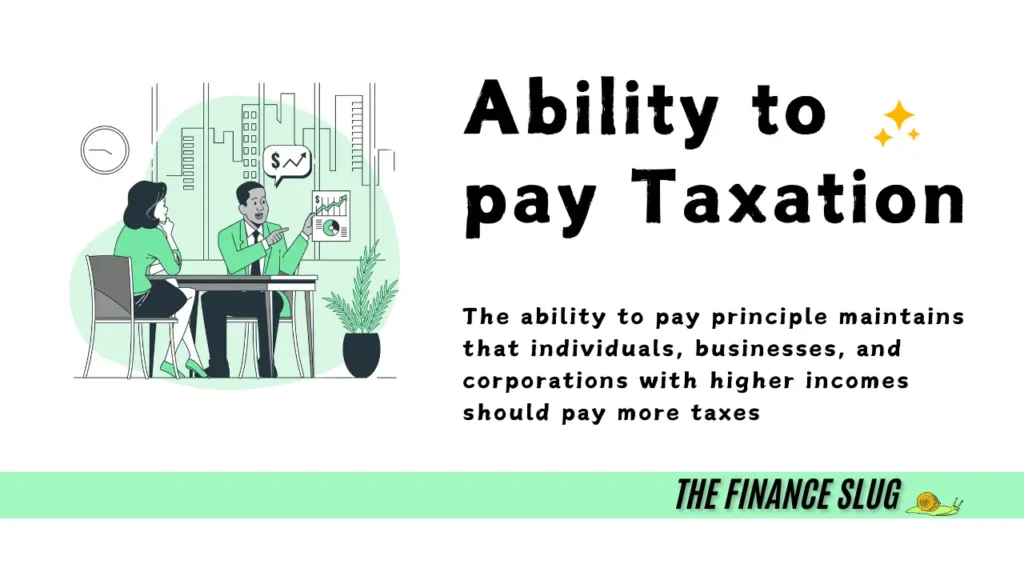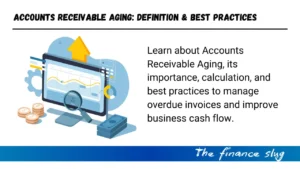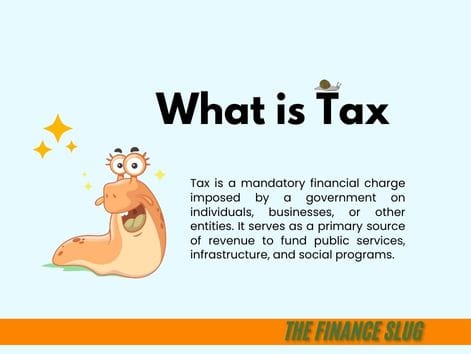
The ability to pay principle is a fundamental concept in taxation, much like key accounting concepts that guide financial reporting, that suggests taxes should be levied based on an individual’s or entity’s financial capacity. This principle is often associated with progressive taxation, where tax rates increase with higher income levels. By understanding this principle, we can better appreciate the rationale behind progressive taxation and its impact on society.
What is the Ability to Pay Principle?
The ability to pay principle maintains that individuals, businesses, and corporations with higher incomes should pay more taxes. This approach argues that those with greater financial resources can and should contribute more to public services and infrastructure.
The idea is rooted in the belief that those who have benefited the most from the economy have a greater responsibility to support the society that enabled their success. This principle is often considered when discussing various accounting methods used to assess an individual’s or entity’s financial capacity.
Historical Background
The concept of taxing based on the ability to pay dates back to classical economists like Adam Smith. In his 1776 work, “The Wealth of Nations,” Smith argued that citizens should contribute to government support in proportion to their income. This idea laid the groundwork for modern progressive tax systems. Over time, the principle has evolved and been adopted by various countries to create more equitable tax systems.
How Progressive Taxation Works
In a progressive tax system, tax rates increase as taxable income rises. For example, in the United States, individuals with higher incomes face higher tax rates. In 2025, those with taxable income over $626,350 will be taxed at 37%, while those earning less than $11,925 will be taxed at 10%. This tiered approach ensures that those with higher incomes contribute a larger share of their earnings to the government, which can then be used to fund public services and infrastructure.
Benefits of the Ability to Pay Principle
One of the primary benefits of the ability to pay principle is equity. This principle promotes fairness by ensuring that those with higher incomes contribute more to society. It recognizes that individuals with greater financial resources have a higher capacity to pay taxes without compromising their standard of living. This approach helps to reduce income inequality and provides a more balanced distribution of wealth.
Another significant benefit is revenue generation. Higher tax rates on wealthy individuals generate significant revenue for public services and infrastructure. This revenue can be used to fund essential services such as healthcare, education, and social welfare programs, which benefit society as a whole. Higher tax rates on wealthy individuals generate significant revenue for public services, such as the child tax credit, which supports families with children
The ability to pay principle also encourages social responsibility. It promotes the idea that those who have benefited most from the economy should give back to society. This sense of responsibility can foster a more cohesive and supportive community, where individuals and businesses recognize their role in contributing to the common good.
Criticisms of the Ability to Pay Principle
Despite its benefits, the ability to pay principle is not without its critics. One common criticism is that high tax rates on the wealthy can create economic disincentives. Critics argue that taxing higher incomes at higher rates can discourage investment and economic growth. They believe that individuals and businesses may be less inclined to invest in new ventures or expand their operations if they face higher tax burdens.
Another criticism is the complexity of progressive tax systems. Administering and enforcing progressive taxes can be challenging, as it requires detailed income assessments and sophisticated tax collection mechanisms. This complexity can lead to increased administrative costs and potential loopholes that individuals and businesses may exploit to reduce their tax liabilities.
Some people also perceive progressive taxation as unfair, similar to the criticisms of ad valorem tax, which is based on the value of goods or property. They argue that taxing higher incomes at higher rates penalizes success and hard work. This perspective suggests that individuals who have worked hard to achieve financial success should not be disproportionately burdened with higher taxes. Critics of the ability to pay principle often advocate for flat tax systems, where everyone pays the same percentage of their income, regardless of their earnings.
Case Studies of Progressive Taxation
To provide a more comprehensive understanding, let’s look at some real-world examples of countries that have successfully implemented progressive taxation based on the ability to pay principle.
Scandinavian Countries: Countries like Sweden and Norway are often cited as models of progressive taxation. In Sweden, the tax system is highly progressive, with high-income earners paying significantly higher tax rates. This revenue funds extensive social welfare programs, including universal healthcare, free education, and generous unemployment benefits. The result is a high level of social equity and economic stability[1].
United States: The U.S. federal income tax system is another example of progressive taxation. With tax rates ranging from 10% to 37%, higher earners contribute a larger share of their income to public finances. This system helps fund essential services such as defense, infrastructure, and social security and is reflected in the government’s financial statements.[2].
United Kingdom: The UK also employs a progressive tax system, with higher earners paying higher rates. This approach supports the National Health Service (NHS), public education, and various social welfare programs. The progressive tax system in the UK aims to balance equity and efficiency, ensuring that those with greater financial resources contribute more to public services[3].
Impact on Economic Behavior
The ability to pay principle and progressive taxation significantly influence economic behavior. Here are some key impacts:
Consumer Spending: Progressive taxation can affect consumer spending patterns. Higher taxes on the wealthy may reduce their disposable income, potentially leading to lower spending on luxury goods. Conversely, tax relief for lower-income individuals can increase their disposable income, boosting spending on essential goods and services[4].
Savings and Investment: Tax policies can influence savings and investment decisions. Higher taxes on capital gains and dividends may discourage investment in stocks and other financial assets. However, tax incentives for retirement savings and other long-term investments can encourage individuals to save more[5].
Labor Supply: Progressive taxation can impact labor supply by affecting individuals’ decisions to work more or less. High marginal tax rates may discourage additional work or overtime, as the after-tax return on extra effort diminishes. However, tax credits and deductions for low-income workers can incentivize labor force participation[6].
Business Decisions: Tax policies also influence business decisions, including where to locate operations, how much to invest in new projects, and how to structure business entities. Progressive corporate taxes can encourage businesses to reinvest profits in growth and development rather than distributing them as dividends.
Ethical Considerations
The ability to pay principle raises important ethical questions. Proponents argue that it is a moral duty for the wealthy to contribute more to society, as they have benefited the most from the economic system. This perspective emphasizes social justice and the need to address income inequality. On the other hand, opponents claim that progressive taxation infringes on individual property rights and penalizes success. They argue for a flat tax system, where everyone pays the same percentage of their income, regardless of their earnings.
Policy Implications and Reforms
The ability to pay principle has significant policy implications. Governments must balance equity and efficiency when designing tax systems. Simplifying tax codes, closing loopholes, and ensuring transparency are essential for effective tax administration. International cooperation is also crucial in addressing tax evasion and ensuring that multinational corporations pay their fair share of taxes.
Future Trends in Taxation
Looking ahead, the ability to pay principle will continue to shape tax policy. Emerging trends include digital taxation, environmental taxes, and the use of technology to improve tax collection and enforcement. As economies evolve, tax systems must adapt to address new challenges and opportunities.
FAQ
6. How does the ability to pay principle address income inequality?
The ability to pay principle helps address income inequality by ensuring that those with higher incomes contribute more to public finances. This additional revenue can be used to fund social programs and services that benefit lower-income individuals, thereby reducing the gap between the rich and the poor.
7. What are some common misconceptions about progressive taxation?
One common misconception is that progressive taxation discourages hard work and innovation. However, research shows that well-designed tax systems can balance equity and efficiency without significantly impacting economic incentives. Another misconception is that progressive taxes are overly complex, but many countries have streamlined their tax codes to make them more user-friendly.
8. How do property taxes fit into the ability to pay principle?
Property taxes are often based on the value of the property, with higher-valued properties subject to
References
- [1] The Case for a Progressive Tax: From Basic Research to Policy …
- [2] Progressive Taxation: Bridging Inequality and Growth
- [3] The Case for a Progressive Tax: From Basic Research to Policy … – SSRN
- [4] How Do Tax Policies Affect Individuals and Businesses?
- [5] Could More Progressive Taxes Increase Income Inequality?
- [6] Efects of Income Tax Changes on Economic Growth
- Stock Market Crash Today: A Bloodbath on Monday – What You Need to KnowPublished on financeslug.xyz The global financial markets are reeling from a massive sell-off, and Indian equity benchmark indices BSE Sensex… Read more: Stock Market Crash Today: A Bloodbath on Monday – What You Need to Know
- Wall Street Bonuses Reach Record $47.5 Billion in 2024, Up 34% from Previous YearWall Street’s bonus pool hit a record $47.5B in 2024, up 34% from 2023, marking the highest payout since 1987.
- How to Convert Delimited CSV Data into Columns in ExcelCSV (Comma-Separated Values) files are widely used for data exchange, but when opened in Excel, the data often appears in… Read more: How to Convert Delimited CSV Data into Columns in Excel
- Harvard University Announces Free Tuition for Families Earning $200K or LessHarvard’s New Tuition-Free Policy: What You Need to Know Harvard University has unveiled a groundbreaking initiative to make higher education… Read more: Harvard University Announces Free Tuition for Families Earning $200K or Less
- Eli Lilly’s 1.8B Dollar Investment in Weight Loss DrugsIreland’s Weight-Loss Drug Boom: A Game-Changer for Economy and Healthcare Ireland is witnessing a surge in pharmaceutical investments, thanks to… Read more: Eli Lilly’s 1.8B Dollar Investment in Weight Loss Drugs
- Forever 21 Files for Bankruptcy Again: The End of an Era in Fast Fashion?Forever 21, once a staple in American malls and a leader in the fast-fashion industry, has filed for Chapter 11… Read more: Forever 21 Files for Bankruptcy Again: The End of an Era in Fast Fashion?
- Accredited Asset Management Specialist (AAMS): Everything You Need to KnowBoost your finance career with the Accredited Asset Management Specialist (AAMS) certification. Learn its benefits, cost & career scope today!
- What is Central Bank Digital Currency (CBDC)? Benefits, Risks & FutureLearn what Central Bank Digital Currency (CBDC) is, how it works, its benefits, risks, and its future in the global financial system.
- Accounts Receivable Financing: What It Is & How It WorksLearn how Accounts Receivable Financing boosts cash flow without debt. Discover benefits, risks, and how it works for businesses.
- Accounts Receivable Aging: Definition, Importance & Best PracticesDiscover Accounts Receivable Aging, its importance, calculation, and best practices to manage overdue invoices and boost cash flow.











